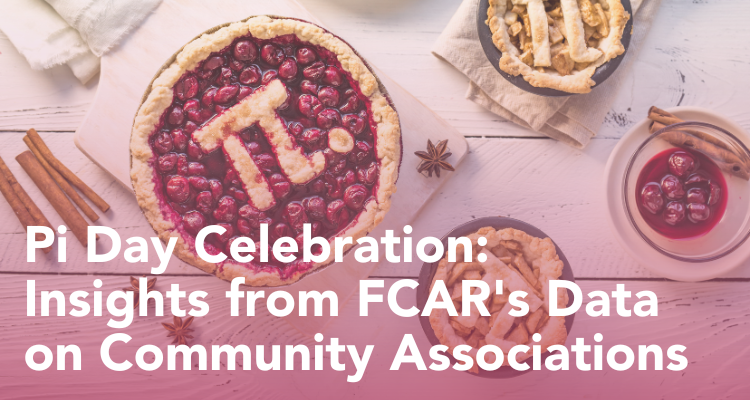Pi Day: an excellent opportunity to delve into the delectable world of pies… and community associations. Let’s explore specific data and statistics provided by the Foundation for Community Association Research.
- Demographic Diversity: A pie chart of the Foundation’s research reveals intriguing insights into the demographic makeup of community associations. Roughly, 73% of community associations in the U.S., are homeowner associations, while condominium associations make up 22%.
- Financial Management: Just as a baker carefully measures ingredients to achieve the perfect pie crust, community associations must manage their finances with precision. The Foundation’s data highlights the importance of reserve funding, with 67% of associations maintaining reserves for major repairs and replacements. This prudent financial planning ensures communities remain financially stable and can weather unexpected expenses.
- Maintenance Matters, Preserving Community Infrastructure: Community associations must prioritize maintenance to preserve property values and enhance residents’ quality of life. FCAR’s statistics indicate that 85% of associations are responsible for maintaining common area landscaping, while 58% oversee street and road maintenance. These figures underscore the significant role associations play in ensuring the upkeep of essential community infrastructure.
- Governance Guidelines: Effective governance is the backbone of any successful community association, akin to following a tried-and-true recipe for a delicious pie. The Foundation’s research shows that 69% of associations are governed by volunteer boards, emphasizing the importance of resident engagement and leadership. By adhering to best practices and governing documents, associations can promote transparency, accountability, and democratic decision-making within their communities.
- Advocacy Efforts: Slicing through legislation requires finesse, just as navigating legal and legislative challenges demands strategic advocacy efforts. The Foundation’s data underscores the importance of community associations’ collective voice, with more than 2.7 million volunteers serving on association boards nationwide. This impressive figure highlights the potential for grassroots advocacy to influence policy decisions and protect community interests at the local, state, and federal levels.
By leveraging this data and statistics, community associations can enhance their governance practices, strengthen their financial management, and advocate effectively for their residents’ rights. Keep these resources and remember the power of data-driven decision-making in shaping vibrant and resilient communities.
Resources:
Maintenance Best Practices Report
Financial Operations Best Practices Report



